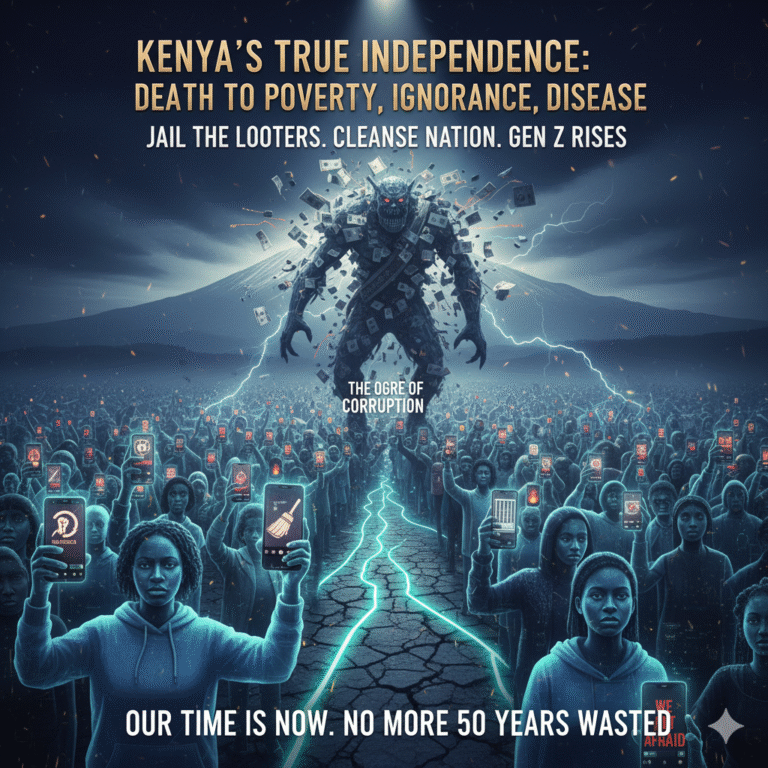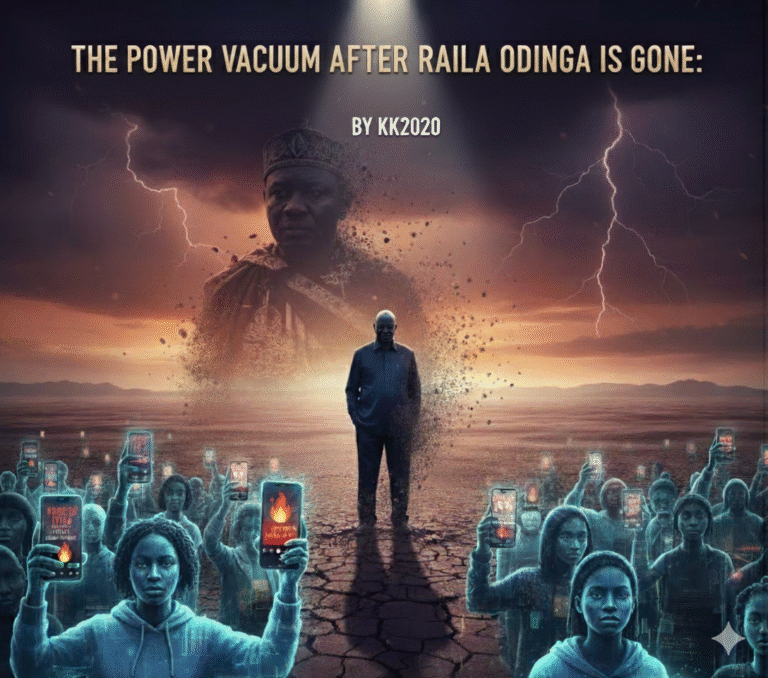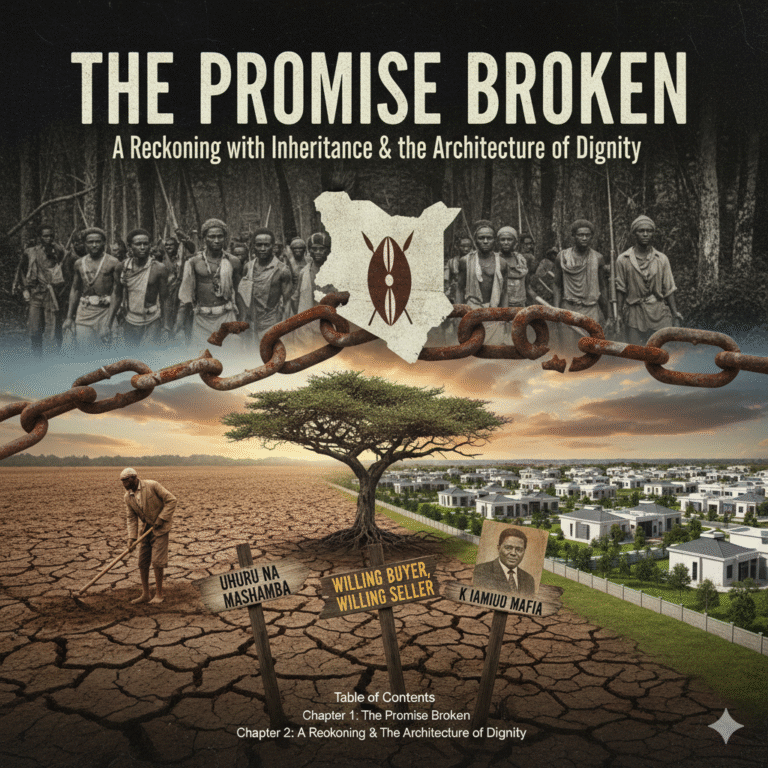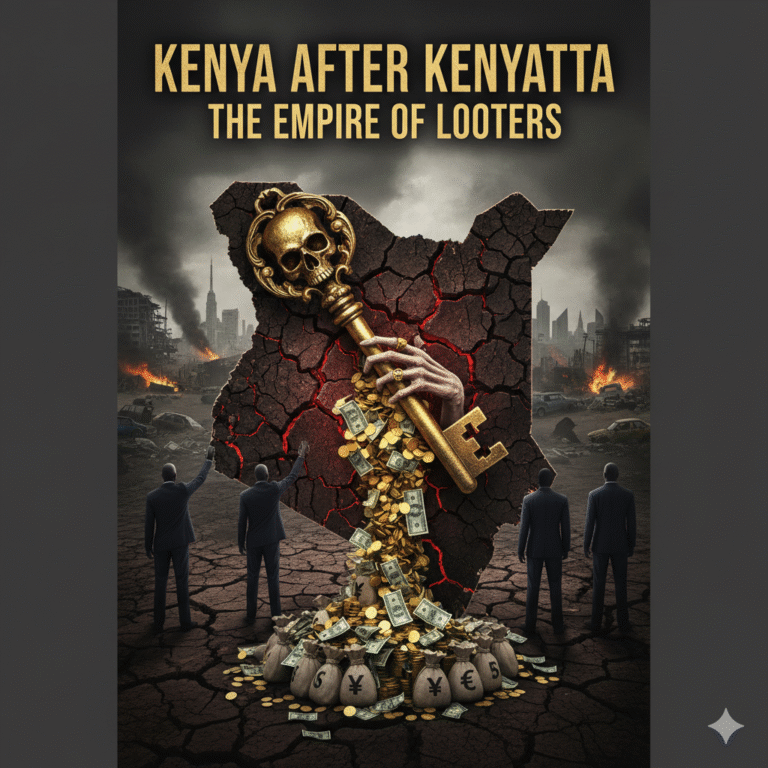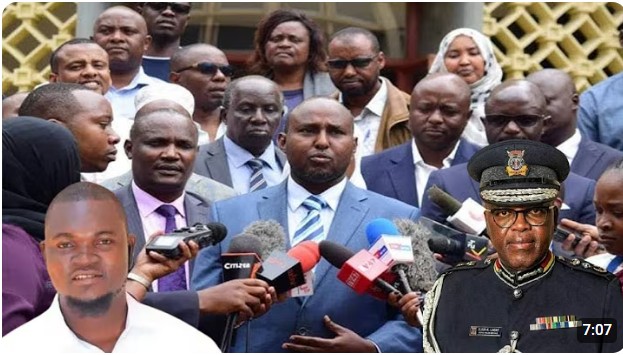
A Broken Promise: Ruto’s Betrayal of the Hustler Nation
Ruto’s rise to power in 2022 was a carefully orchestrated campaign that leveraged the digital age’s power. His message, targeting youth on platforms like TikTok and YouTube, resonated deeply with Kenyans. Promises of uplifting the ordinary citizen, dismantling political dynasties, and building a new Kenya helped him secure a narrow victory. The “Hustler Nation” vision became the cornerstone of his presidency, positioning him as a revolutionary figure fighting against impunity and patronage.
But by 2024, those promises began to feel hollow. Ruto’s Finance Bill, which imposed heavy taxes on fuel, digital transactions, and food commodities, sparked outrage. Once-enthusiastic supporters, including students who had rallied behind him, became vocal critics. What started as online enthusiasm quickly turned into fury on the streets. Protests erupted, and public sentiment shifted. The promises of reform were overshadowed by the reality of tax hikes, economic hardship, and a betrayal of the very people who had put him in power. When the government responded with violence, the mask of reform shattered.
The MOU Misstep: ODM’s Compromise for Power
The ODM’s decision to sign an MOU with Ruto’s regime marked a turning point in Kenya’s political landscape. Once a party known for leading mass boycotts, street protests, and calls for constitutional reform, ODM now found itself sitting at the table with the very forces it had once opposed. The justification for this alliance—”national unity” and “stability”—felt like a cover-up for political surrender.
This move was made without consultation with the public, and the MOU process was conducted behind closed doors. ODM gained ministerial positions and the perks of state power, but at what cost? The party, once a symbol of resistance, had become complicit in the very system it had fought to change. As protestors continued to die and students were abducted, ODM’s silence became deafening. The party’s claim to be “working from within” rang hollow as the violence escalated.
A Glittering Distraction: From Rebels to Bureaucrats
Government office perks—luxury cars, international travel, and bodyguards—quickly transformed ODM leaders. Once vocal rebels in Parliament, they now played the part of bureaucrats, praising government projects and attending press briefings, their smiles masking the discomfort of their transformation. The public, watching from the streets, couldn’t reconcile the image of the once fiery opposition with the present-day leaders who had embraced the opulence of power.
As youth unemployment soared in Kisumu and Kibra, and police cracked down on protests in Migori and Mathare, ODM ministers remained silent. The perks were evident, but the price was clear—silence in the face of injustice. This silence created a vacuum, one that was quickly filled by social media influencers, independent journalists, and Gen Z protest leaders who spoke up where the party had fallen short.
The Crackdown and Its Cost: The Bloodshed of 2024
What began as resistance to economic policies quickly turned into a brutal chapter in Kenya’s history. Protests against the Finance Bill were met with excessive force—live bullets, tear gas, and water cannons. Protestors were detained and taken to unknown locations, their bodies later discovered in forests and rivers, bloated and lifeless.
Ruto’s government labeled protest organizers as foreign agents, but the reality was that the protests were driven by local, organic anger. Civil society groups demanded independent inquiries, but ODM’s silence in Parliament was telling. The party’s failure to speak out against the police violence left a mark. As death squads roamed Nairobi and activists disappeared, ODM’s inaction was remembered by the public—and the cost was measured in lives.
Gen Z’s Blood River: A New Generation Awakens
Billy Mwangi, a 22-year-old university student, was known for his sharp memes and satirical takes on politics. His disappearance, followed by his body being found near Thika River, became a rallying point for the youth. Hashtags, online vigils, and street graffiti memorialized his tragic death. The government’s claim that his death was a criminal matter was quickly contradicted by the autopsy report, which suggested torture.
Social media, once a platform for expression, became a weapon for both the government and the people. Protestors were tracked and arrested, while journalists were silenced. ODM ministers, who had once represented the voice of the oppressed, were now part of the system that surveilled and oppressed dissent. They had become complicit in the machinery of power they once fought against.
Leadership in Limbo: A Party Without Purpose
By 2025, ODM found itself in political limbo. The party’s base felt abandoned, and its leaders were divided. Some called for a return to the streets, while others warned against it. Raila Odinga, once the symbol of defiance, issued carefully crafted statements supporting the youth while simultaneously praising the President’s commitment to stability. But no one believed it anymore.
Behind the scenes, figures like Farouk Kibet and Oscar Sudi wielded unchecked power, making decisions on appointments and police deployments. ODM’s youth wing struggled to rally support, but turnout was low. The party had lost its moral clarity, and its political influence had waned. With a leadership vacuum, Kenyans turned to other forms of resistance.
Rise or Retreat: The Quiet Storm of Civil Disobedience
As trust in the government reached rock bottom and opposition voices faltered, Kenyans were left with a harsh choice: wait for change or take action. Many no longer believed that elections could solve the country’s problems. Civil disobedience, mass walkouts, and online boycotts became powerful tools for protest. Despite swift repression, defiance persisted.
The Kenyan people, especially the youth, began to realize that no regime can survive indefinitely under the weight of such anger and dissatisfaction. The Ruto administration, beset by scandals and failures, now survives on inertia. Yet, the end of this regime is no longer unthinkable. It’s clear: change will come not from leaders, but from the people.
CLICK HERE:Listen To WANTAMNOTAM PODCAST AND TAKE ACTION
